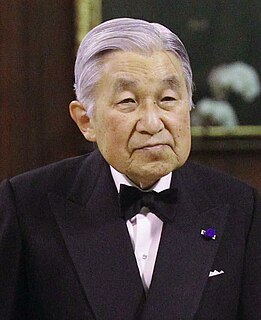 W
WAkihito is a member of the Imperial House of Japan who reigned as the 125th emperor of Japan, according to the traditional order of succession, from 7 January 1989 until 30 April 2019. He presided over the Heisei era, Heisei being an expression of achieving peace worldwide.
 W
WPrince Arisugawa Takahito was the eighth head of the Arisugawa-no-miya (有栖川宮家) house, one of the shinnōke branches of the Imperial Family of Japan, which were eligible to succeed to the Chrysanthemum Throne in the event that the main line should die out.
 W
WOnisaburo Deguchi , born Ueda Kisaburō 上田 喜三郎 (1871–1948), is considered one of the two spiritual leaders of the Ōmoto religious movement in Japan.
 W
WThe Emperor of Japan is the monarch and the head of the Imperial Family of Japan. Under the Constitution of Japan, he is defined as the symbol of the Japanese state and the unity of the Japanese people, and his position is derived from "the will of the people with whom resides sovereign power". Imperial Household Law governs the line of imperial succession. The emperor is immune from prosecution by the Supreme Court of Japan. He is also the head of the Shinto religion. In Japanese, the emperor is called Tennō , literally Emperor of God" or "Heavenly Sovereign". The Japanese Shinto religion holds him to be the direct descendant of the solar goddess Amaterasu. The emperor is also the head of all national Japanese orders, decorations, medals, and awards. In English, the use of the term Mikado (帝/御門) for the emperor was once common but is now considered obsolete.
 W
WMichiko is a member of the Imperial House of Japan who served as the Empress consort of Japan as the wife of Akihito, the 125th Emperor of Japan reigning from 7 January 1989 to 30 April 2019.
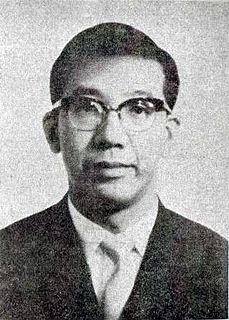 W
WJun Etō was the pen name of a Japanese literary critic, active in the Shōwa and early Heisei periods of Japan. His real name was Egashira Atsuo .
 W
WFujiwara no Kamatari was a Japanese statesman, courtier and aristocrat during the Asuka period (538–710). He is the founder of the Fujiwara clan, the most powerful aristocratic family in Japan during Nara and Heian periods. He, along with the Mononobe clan, was a supporter of Shinto and fought the introduction of Buddhism to Japan. The Soga clan, defenders of Buddhism in the Asuka period, defeated Kamatari and the Mononobe clan and Buddhism became the dominant religion of the imperial court. Kamatari, along with Prince Naka no Ōe, later Emperor Tenji (626–672), launched the Taika Reform of 645, which centralized and strengthened the central government. Just before his death he received the surname Fujiwara and the rank Taishōkan from Emperor Tenji, thus establishing the Fujiwara clan.
 W
WSayaka Ganz is a Japanese sculptress. She was born in Yokohama, Japan and grew up living in Japan, Brazil, and Hong Kong. Ganz identifies a strong Japanese influence in her work, even though she grew up in several countries. During her BFA studies at Indiana University Bloomington she explored various media, from ceramics to printmaking, before determining sculpture and welding as her expressive vehicles of choice. She met and married her husband Christopher Ganz, artist and professor in printmaking, during her time in Bloomington. Between 2002 and 2012 she taught design and drawing courses at Indiana University-Purdue University Fort Wayne (IPFW). She has been living and working in Indiana for 15 years.
 W
WTsutomu Hata was a Japanese politician who served as Prime Minister of Japan for nine weeks in 1994. He took over from Morihiro Hosokawa at the head of a coalition government. Shortly after he had been appointed Prime Minister, the Japanese Socialist Party left the government, leading to his early departure from office. He was a member of the lower house representing Nagano district #3. He was elected 14 times, retiring in 2012.
 W
WHayashi Tadataka was a Japanese daimyō of the late Edo period, who ruled the Jōzai Domain. Later in life, he was also known by his style, Ichimu (一夢). During the Boshin War of 1868, Hayashi led his domain's forces in support of the armies of the former shōgun, and then the Ōuetsu Reppan Dōmei. Unlike the Tokugawa forces that went on to Ezo, Hayashi surrendered willingly when he received word that the Tokugawa family was to be granted a fief in Shizuoka. During the Meiji period he worked in various occupations, before working for the government. In the Meiji period, his family was ennobled as part of the kazoku system. For a time he also served at Tōshō-gū in Nikkō. Hayashi lived well into the 20th century, and was famous as "the last daimyō". He died in early 1941, in an apartment run by his daughter Mitsu.
 W
WKiichirō Hiranuma was a prominent pre–World War II right-wing Japanese politician and Prime Minister of Japan in 1939. He was convicted of war crimes and sentenced to life imprisonment.
 W
WHirata Atsutane was a Japanese scholar, conventionally ranked as one of the Four Great Men of Kokugaku (nativist) studies, and one of the most significant theologians of the Shintō religion. His literary name was Ibukinoya (気吹舎), and he is known to have used, among others, the names Daigaku (大壑), Daikaku (大角), and Gentaku (玄琢). His personal name was Hanbē (半兵衛).
 W
WHirohito (裕仁), posthumuously known as Emperor Shōwa , was the 124th emperor of Japan, ruling from 1926 until his death in 1989. Hirohito and his wife, Empress Kōjun, had two sons and five daughters; he was succeeded by his fifth child and eldest son, Akihito. By 1979, Hirohito was the only monarch in the world with the title "emperor". He was the longest-lived and longest-reigning historical Japanese emperor and one of the longest-reigning monarchs in the world.
 W
WBunmei Ibuki is a Japanese politician.
 W
WAkira Ifukube was a Japanese classical and film music composer, best known for his works on the Godzilla franchise.
 W
WInaba Masakuni was a Japanese daimyō of the late-Edo period. In the Edo period, the Makino were identified as one of the fudai or insider daimyō clans which were hereditary vassals or allies of the Tokugawa clan, in contrast with the tozama or outsider clans.
 W
WShintaro Ishihara is a Japanese politician and writer who was Governor of Tokyo from 1999 to 2012. Being the former leader of the radical right Japan Restoration Party, he is one of the most prominent nationalists in modern Japanese politics. An ultranationalist, he is infamous for his racist remarks, xenophobic views and hatred of Chinese and Koreans, including using the antiquated pejorative term "sangokujin".
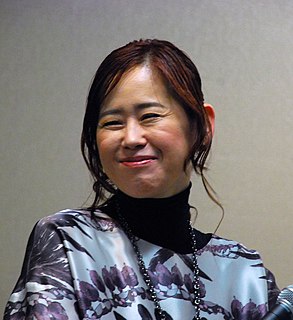 W
WYuki Kajiura is a Japanese musician, composer and record producer. She has provided the music for several popular anime series, such as the final Kimagure Orange Road movie, Noir, .hack//Sign, Aquarian Age, Madlax, My-HiME, My-Otome, Pandora Hearts, Puella Magi Madoka Magica, Fate/Zero, Sword Art Online, Tsubasa: Reservoir Chronicle, Demon Slayer: Kimetsu no Yaiba and the Kara no Kyoukai movies. She also assisted Toshihiko Sahashi with Mobile Suit Gundam SEED and Mobile Suit Gundam SEED Destiny. Kajiura has also composed for video games, including the cutscene music for Xenosaga II and the entire Xenosaga III game soundtrack. She composed the music for NHK's April 2014 morning drama (asadora) Hanako to Anne.
 W
WPrince Kan'in Kotohito was the sixth head of a cadet branch of the Japanese imperial family, and a career army officer who served as Chief of the Imperial Japanese Army General Staff from 1931 to 1940.
 W
WKanō Motonobu was a Japanese painter and calligrapher. He was a member of the Kanō school of painting. Through his political connections, patronage, organization, and influence he was able to make the Kanō school into what it is today. The system was responsible for the training of a great majority of painters throughout the Edo period (1603–1868). After his death, he was referred to as Kohōgen (古法眼).
 W
WJunichiro Koizumi is a Japanese politician who was Prime Minister of Japan and President of the Liberal Democratic Party (LDP) from 2001 to 2006. He retired from politics in 2009, and he remains the sixth-longest serving Prime Minister in Japanese history.
 W
WMarie Kondo , also known as Konmari (こんまり), is a Japanese organizing consultant, author, and TV show host.
 W
WVice-Admiral Prince Kuni Asaakira , was third head of the Kuni-no-miya, a collateral branch of the Japanese imperial family and vice admiral in the Japanese Imperial Navy during World War II. He was the elder brother of Empress Kojun (Nagako), the consort of Emperor Shōwa (Hirohito), and thus a maternal uncle to the Heisei Emperor.
 W
WSayako Kuroda , formerly Sayako, Princess Nori , is the youngest child and only daughter of Emperor Emeritus Akihito and Empress Emerita Michiko, and the younger sister of the current Emperor of Japan, Naruhito. She is an imperial Shinto priestess of the Ise Grand Shrine, currently serving as the Supreme Priestess.
 W
WMatsudaira Katamori was a samurai who lived in Bakumatsu period and the early to mid Meiji period Japan. He was the 9th daimyō of the Aizu Domain and the Kyoto Shugoshoku. He initiated and established the Shinsengumi in 1863. During the Boshin War, he led Aizu Domain against the incipient Meiji government, but was severely defeated at the Battle of Aizu. Katamori's life was spared, and he later became the head kannushi of the Nikkō Tōshō-gū shrine. He, along with his three brothers Matsudaira Sadaaki, Tokugawa Yoshikatsu, and Tokugawa Mochiharu, had highly influential roles during the Meiji restoration and were called the "four Takasu brothers".
 W
WMatsudaira Yoritaka was a Japanese daimyō of the late Edo period who served as daimyō of Shishido han. Retiring early, he was succeeded by his son Matsudaira Yorinori, but Yoritaka returned to headship following Yorinori's death in 1864. Though the domain was abolished following its involvement in the chaos of the Tengu-tō (天狗党) "Tengu Party" revolt of 1864, the new Satsuma-Chōshu centered government of the Meiji Emperor forgave Shishido, and allowed Yoritaka to retake his former holdings. Becoming han chiji by Imperial order in 1869, he remained in that position until the abolition of the domains in 1871. After that he became a Shinto priest and was famed as a prolific writer. His son Matsudaira Yoriyasu succeeded him as family head in 1880. Yoritaka's granddaughter Natsu, is famous as the grandmother of Mishima Yukio. Under the new system of nobility, Yoriyasu became a viscount.
 W
WPrince Matsukata Masayoshi was a Japanese politician who was Prime Minister of Japan from 1891 to 1892 and 1896 to 1898.
 W
WHayao Miyazaki is a Japanese animator, director, producer, screenwriter, author, and manga artist. A co-founder of Studio Ghibli, he has attained international acclaim as a masterful storyteller and creator of Japanese animated feature films, and is widely regarded as one of the most accomplished filmmakers in the history of animation.
 W
WMotoori Norinaga was a Japanese scholar of Kokugaku active during the Edo period. He is conventionally ranked as one of the Four Great Men of Kokugaku (nativist) studies.
 W
WYasuhiro Nakasone was a Japanese politician who served as Prime Minister of Japan and President of the Liberal Democratic Party from 1982 to 1987. He was a member of the House of Representatives for more than 50 years. He was best known for pushing through the privatization of state-owned companies, and for helping to revitalize Japanese nationalism during and after his term as prime minister.
 W
WNakayama Miki was a nineteenth-century Japanese farmer and religious leader. She is the primary figure of the Japanese new religion Tenrikyo. Followers, who refer to her as Oyasama (おやさま), believe that she was settled as the Shrine of Tsukihi from the moment she experienced a divine revelation in 1838 until her death in 1887.
 W
WPrince Nashimoto Morimasa was a member of the Japanese Imperial Family and a field marshal in the Imperial Japanese Army. An uncle-in-law of Emperor Shōwa, an uncle of his consort, Empress Kōjun, and the father-in-law of Crown Prince Euimin of Korea, Prince Nashimoto was the only member of the Imperial Family arrested for war crimes during the American occupation of Japan following the Second World War.
 W
WSaigō Tanomo was a Japanese samurai of the late Edo period. Chief senior councilor of the Aizu clan, he achieved fame due to his distinguished action in the Boshin War. He adopted the name Hoshina Chikanori. Surviving the war, he became a Shinto priest, and achieved renown as a martial artist. He is considered one of the teachers of the famed Takeda Sōkaku.
 W
WMarquis Sasaki Takayuki was a bureaucrat, government minister and court official in late Meiji period Japan.
 W
WShimazaki Masaki was a Japanese honjin chief, student of kokugaku, and Shinto priest. He was the father of Shimazaki Tōson. He primarily wrote under the name of Aratamanoya (璞堂), but later in life also adopted the names Shizunoya (静舎) and Kanzanrō (観山楼). His courtesy name was Sadao (禎夫), and he was referred to by relatives as Kichizaemon (吉左衛門), the family's hereditary name.
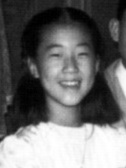 W
WTakako Shimazu , born Takako, Princess Suga , is a former member of the Imperial House of Japan. She is the fifth and youngest daughter of Emperor Shōwa and Empress Kōjun, and the youngest sister of the Emperor Emeritus of Japan, Akihito. She married Hisanaga Shimazu on 3 March 1960. As a result, she gave up her imperial title and left the Japanese Imperial Family, as required by law.
 W
WEmperor Taishō was the 123rd Emperor of Japan, according to the traditional order of succession, and the second ruler of the Empire of Japan from 30 July 1912 until his death in 1926.
 W
WKazuko Takatsukasa , formerly Kazuko, Princess Taka , was the third daughter of Emperor Shōwa and Empress Kōjun. She was an elder sister to the former Emperor of Japan, Emperor Akihito. She married Toshimichi Takatsukasa on 21 May 1950. As a result, she gave up her imperial title and left the Japanese Imperial Family, as required by law.
 W
WTodoroki Buhē was a Japanese samurai retainer of the Kumamoto Domain, anti-foreign activist, Neo-Confucian scholar, kokugaku student, swordsman, and instructor of swordsmanship. He is also known to have used the pseudonyms Yūmei (游冥) and Shindokuken (慎独軒).
 W
WTsunoda Tadayuki was a Japanese scholar of kokugaku. He was also a Shinto priest.
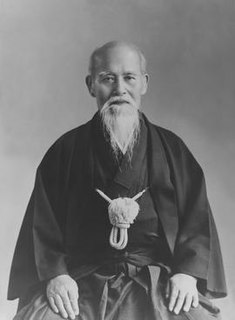 W
WMorihei Ueshiba was a Japanese martial artist and founder of the martial art of aikido. He is often referred to as "the founder" Kaiso (開祖) or Ōsensei (大先生/翁先生), "Great Teacher".
 W
WYamazaki Ansai was a Japanese philosopher and scholar. He began his career as a Buddhist monk, but eventually came to follow the teachings of Neo-Confucian Zhu Xi. He combined Neo-Confucian ideas with Shinto to create Suika Shinto.